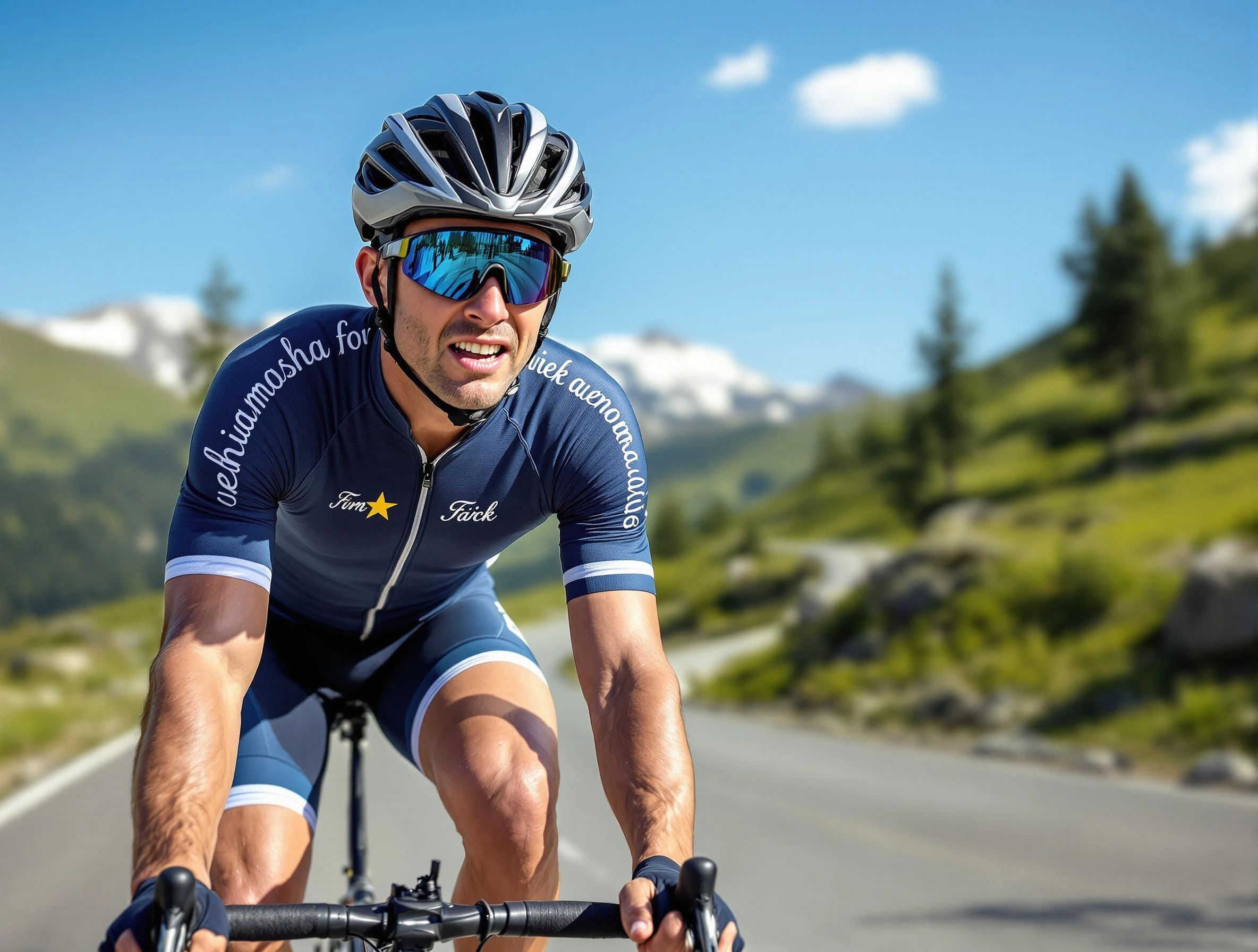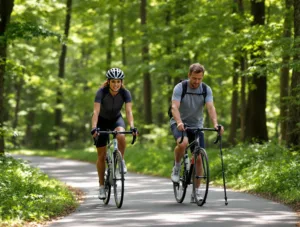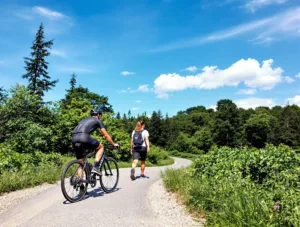Morning vs. Evening Cycling: When Is the Best Time to Burn Fat Faster?
Introduction
Cycling is one of the most effective ways to burn fat, improve cardiovascular health, and boost overall fitness. But does the time of day you ride impact how quickly you shed excess weight? Research suggests that the timing of your cycling sessions can influence fat metabolism, energy levels, and workout performance. Whether you prefer the tranquility of a sunrise ride or the adrenaline rush of an evening sprint, understanding the physiological differences between morning and evening cycling can help you optimize fat loss.
This article explores the science behind fat burning during cycling, compares the benefits of morning versus evening rides, and provides practical advice to help you maximize your results. By the end, you’ll have a clear understanding of the best time to cycle for faster fat loss based on your lifestyle, energy levels, and fitness goals.
The Science of Fat Burning During Cycling
Before diving into the best time of day to cycle, it’s essential to understand how the body burns fat during exercise.
How the Body Burns Fat
Fat burning occurs when the body uses stored fat as a primary energy source. This process, known as lipolysis, is influenced by:
- Exercise intensity (moderate-intensity cycling is optimal for fat oxidation)
- Duration of the ride (longer rides deplete glycogen stores, forcing the body to rely on fat)
- Nutritional status (fasted exercise may enhance fat burning)
- Circadian rhythm (hormonal fluctuations throughout the day affect metabolism)
The Role of Cortisol and Insulin
- Morning: Cortisol (a stress hormone that promotes fat breakdown) peaks in the early hours, potentially enhancing fat utilization.
- Evening: Insulin sensitivity is higher later in the day, which may improve glycogen storage and muscle recovery.
Understanding these mechanisms helps determine whether morning or evening cycling is more effective for fat loss.
Benefits of Morning Cycling for Fat Loss
1. Increased Fat Oxidation in a Fasted State
Cycling before breakfast (fasted cardio) forces the body to rely on fat stores rather than recently consumed carbohydrates. Studies suggest that fasted aerobic exercise can enhance fat oxidation by up to 20%.
Practical Tip:
- Keep the ride at a moderate intensity (60-70% of max heart rate) to optimize fat burning without excessive muscle breakdown.
2. Higher Cortisol Levels Enhance Fat Breakdown
Since cortisol is naturally elevated in the morning, it may help mobilize fatty acids for energy.
3. Boosts Metabolism for the Entire Day
Morning exercise can increase excess post-exercise oxygen consumption (EPOC), keeping your metabolism elevated for hours after the ride.
4. Better Consistency and Mental Clarity
- Morning workouts reduce the likelihood of skipping sessions due to daily distractions.
- Cycling early can improve mental focus and reduce stress throughout the day.
Potential Drawbacks:
- Lower glycogen stores may reduce high-intensity performance.
- Stiff muscles in the morning increase injury risk without proper warm-up.
Benefits of Evening Cycling for Fat Loss
1. Higher Performance and Intensity
Body temperature, flexibility, and strength peak in the late afternoon, allowing for more powerful sprints and endurance rides.
Practical Tip:
- Use evening sessions for high-intensity interval training (HIIT), which burns significant calories post-workout.
2. Improved Insulin Sensitivity
Evening exercise helps regulate blood sugar, reducing fat storage risks after meals.
3. Stress Relief and Better Sleep (If Timed Right)
Moderate cycling in the early evening can lower cortisol levels, promoting relaxation. However, intense rides too close to bedtime may disrupt sleep.
4. Social and Competitive Opportunities
Group rides and cycling clubs often meet in the evenings, adding motivation and accountability.
Potential Drawbacks:
- Fatigue from the day may reduce workout motivation.
- Late-night intense exercise can interfere with sleep quality.
Morning vs. Evening: Which Is Better for Fat Loss?
| Factor | Morning Cycling | Evening Cycling |
|---|---|---|
| Fat Oxidation | Higher in fasted state | Better glycogen utilization |
| Hormonal Advantage | Elevated cortisol aids fat breakdown | Improved insulin sensitivity |
| Performance | Lower intensity capacity | Peak strength & endurance |
| Consistency | Easier to stick to | May be affected by daily fatigue |
| Recovery & Sleep | Energizing, no sleep disruption | Can interfere with sleep if too intense/late |
Key Takeaways:
- For steady fat burning: Morning fasted rides may be more effective.
- For high-intensity fat loss: Evening rides allow for greater performance.
- For long-term adherence: Choose the time that fits your schedule and energy levels.
Practical Tips to Maximize Fat Burning on the Bike
1. Optimize Fasted Morning Rides
- Hydrate well before riding.
- Keep intensity moderate (Zone 2 training).
- Consider caffeine (black coffee) to enhance fat oxidation.
2. Leverage Evening HIIT Workouts
- Perform 30-second sprints followed by 1-minute recovery.
- Finish at least 2-3 hours before bedtime to avoid sleep disruption.
3. Combine Both for Maximum Results
- Morning: Low-intensity endurance rides (45-60 mins).
- Evening: Short, high-intensity sessions (20-30 mins).
4. Prioritize Nutrition
- Post-morning ride: Consume protein and healthy fats.
- Post-evening ride: Include carbs for recovery.
Conclusion: The Best Time to Cycle for Faster Fat Loss
The debate between morning and evening cycling for fat loss depends on individual factors such as metabolism, schedule, and workout preferences. Morning rides excel in fat oxidation due to fasted-state benefits and cortisol-driven fat breakdown, while evening sessions allow for higher-intensity efforts that boost overall calorie burn.
Final Recommendation:
- If fat loss is your primary goal, start with fasted morning cycling at a moderate pace.
- If performance and intensity matter more, prioritize evening rides with HIIT sessions.
- The best approach? Combine both for a balanced, sustainable fat-burning strategy.
Ultimately, consistency matters more than timing. Whether you’re an early bird or a night rider, the key is to cycle regularly, fuel smartly, and enjoy the ride!
Would you like any modifications or additional details on specific aspects of cycling for fat loss?









Add comment